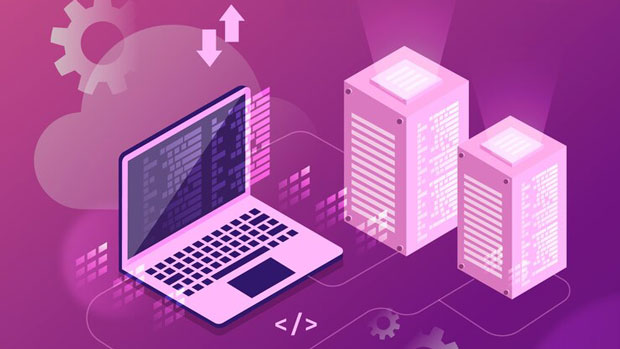In today’s rapidly evolving digital landscape, the need for precise location-based services has become increasingly crucial for various industries, from marketing to logistics. The py s5 Manager Client provides a robust platform to implement city-level precision positioning, ensuring that businesses can enhance their operational efficiency, tailor marketing strategies, and deliver customized services to their customers. This tutorial offers a detailed guide on how to effectively utilize the PY S5 Manager Client, enabling users to navigate the software’s capabilities and leverage its powerful features to achieve accurate and reliable location data. Understanding the Importance of Precision City-Level PositioningThe ability to target and optimize operations based on location has transformed several sectors, from retail and e-commerce to transportation and emergency services. Precision city-level positioning allows businesses to access highly detailed geographic data, making it possible to tailor their offerings to specific neighborhoods, streets, or even buildings.For example, in the retail sector, understanding customer behavior based on their proximity to specific stores can help companies optimize inventory, adjust staffing, or even design more effective local advertising campaigns. Similarly, logistics companies can enhance route planning and reduce operational costs by accessing precise location data, ultimately improving delivery times and customer satisfaction.By integrating such advanced location-based technology, businesses can make informed decisions that directly impact their bottom line, customer engagement, and overall efficiency. Now, let’s explore the PY S5 Manager Client and how it enables effective city-level positioning.Overview of the PY S5 Manager ClientThe PY S5 Manager Client is a comprehensive software platform designed for high-precision location tracking and management. It provides users with a set of tools for configuring and deploying city-level positioning systems, whether for marketing campaigns, logistics optimization, or any other location-dependent operations.Key features of the PY S5 Manager Client include:1. Advanced GPS Technology: Leveraging cutting-edge GPS and GIS (Geographical Information Systems) technology, the PY S5 Manager Client ensures that positioning data is accurate to the nearest meter, making it suitable for various applications that require high precision.2. City-Level Precision: As the name suggests, the PY S5 Manager Client is designed to offer pinpoint accuracy for city-level operations. Users can drill down into specific urban areas to obtain localized data that is crucial for more targeted business decisions.3. Real-Time Data Access: One of the standout features is the ability to access real-time positioning data, allowing businesses to respond quickly to changes in their environment, such as shifts in customer behavior or delivery status.4. User-Friendly Interface: Despite its advanced capabilities, the PY S5 Manager Client offers an intuitive interface that makes it easy for users to set up, configure, and manage their city-level positioning systems without requiring in-depth technical expertise.Setting Up the PY S5 Manager ClientSetting up the PY S5 Manager Client for precision city-level positioning is a straightforward process, but it requires careful attention to detail to ensure optimal functionality. Below are the basic steps to get started:1. Installation and Configuration: - First, download and install the PY S5 Manager Client on your system. During installation, ensure that all necessary dependencies and updates are in place for the software to run smoothly. - After installation, open the client and configure your location settings. This involves selecting the relevant geographic regions and inputting the necessary coordinates to ensure accuracy in positioning data.2. Choosing the Right Positioning Method: - The PY S5 Manager Client offers different methods of positioning depending on the use case. Users can select from options like GPS, Wi-Fi-based positioning, or cellular triangulation. - Depending on the level of precision required, users can choose a positioning method that best suits their needs. For example, GPS may be preferred for outdoor tracking, while Wi-Fi positioning may be more suitable for indoor localization.3. Defining Geofences: - A critical aspect of city-level positioning is the ability to create geofences. Geofences are virtual boundaries that allow businesses to track when a device enters or exits a predefined area. - In the PY S5 Manager Client, users can define these geofences by setting coordinates and radius, ensuring that the system can trigger specific actions based on location data.4. Integration with Other Systems: - For businesses that wish to integrate the PY S5 Manager Client with existing systems (e.g., inventory management or CRM), the platform offers APIs and SDKs that make integration seamless. This allows businesses to access location data directly from their operational systems, enabling faster decision-making.Practical Applications of Precision City-Level PositioningThe real value of precision city-level positioning lies in its application across various business functions. Let’s examine some of the key use cases:1. Targeted Marketing Campaigns: - Businesses can leverage city-level positioning to launch hyper-targeted marketing campaigns. By analyzing customer behavior based on their location, businesses can offer personalized promotions or discounts to customers who are in proximity to a store or an event. - For example, a retail chain can use the PY S5 Manager Client to track customers’ movements within specific city blocks and send them location-based advertisements or loyalty rewards.2. Logistics Optimization: - Logistics and delivery companies benefit greatly from precision positioning. By utilizing the PY S5 Manager Client’s real-time data, they can optimize delivery routes, reduce fuel consumption, and improve customer satisfaction by providing accurate delivery time estimates. - Furthermore, the ability to track vehicles and shipments at a city-level resolution helps companies ensure that operations run smoothly and on time.3. Urban Planning and Smart Cities: - Urban planners and governments can also use city-level positioning to design smarter cities. By analyzing traffic patterns, foot traffic, and environmental data, authorities can make informed decisions about infrastructure development and urban zoning. - The PY S5 Manager Client can provide the precise data necessary to improve city planning, from optimizing public transport routes to assessing the impact of construction projects.4. Public Safety and Emergency Services: - In emergency situations, knowing the precise location of incidents is crucial for first responders. The PY S5 Manager Client can help coordinate emergency services more effectively by providing real-time location data of incidents, helping authorities respond faster and more efficiently.Benefits and Challenges of City-Level PositioningWhile precision city-level positioning offers numerous benefits, there are also challenges that businesses and organizations must navigate.Benefits:- Increased Accuracy: The ability to pinpoint locations to the nearest meter improves decision-making in marketing, logistics, and urban planning.- Operational Efficiency: With real-time data and precise tracking, businesses can streamline operations, reduce costs, and improve service delivery.- Enhanced Customer Experience: Location-based services enhance the customer experience by offering personalized interactions and faster response times.Challenges:- Privacy Concerns: Collecting and processing location data raises privacy issues. Businesses must ensure that they comply with data protection regulations, such as GDPR, and safeguard customer privacy.- Cost and Complexity: Implementing a city-level positioning system can be expensive and complex, especially for smaller businesses with limited resources.The PY S5 Manager Client offers a powerful solution for businesses seeking to take advantage of city-level precision positioning. By following the steps outlined in this tutorial, users can set up and utilize the software to optimize their operations, improve customer experiences, and make data-driven decisions. However, businesses must also be mindful of the challenges, particularly concerning privacy and costs. By leveraging the right tools and strategies, businesses can unlock the full potential of precision city-level positioning and stay ahead in today’s competitive market.
Nov 14, 2025



































































